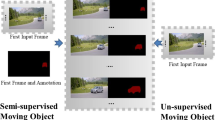Abstract
In this paper, the YOLO (You Only Look Once) algorithm, which is a representative algorithm for real-time object detection and segmentation technology, is analyzed according to in order of development. As its name suggests, the YOLO algorithm can detect objects with a single forward pass, making possible fast and accurate object detection and segmentation. This paper explores the characteristics and history of the YOLO algorithm. The performance of the YOLO algorithm is evaluated using the COCO (Common Objects in Context) data set. By far the most difficult aspect of deep learning is preparing the training data, and the data applicable to each field of application is severely limited. Despite these limitations, the YOLO model still has a substantially faster processing speed than other conventional models and continues to be in widespread use. Each version of the YOLO algorithm has adopted various ideas and techniques for further performance improvements, presenting researchers with new directions for resolving problems in object detection. These advances will continue, and the YOLO algorithm will provide important insights into the ways we understand and recognize images and video.
Graphical abstract











Similar content being viewed by others
References
K. He, G. Gkioxari, P. Dollár, R. Girshick, In Proceedings of the IEEE international conference on computer vision. 2961–2969 (2017)
J. Redmon, S. Divvala, R. Girshick, A. Farhadi, In Proceedings of the IEEE conference on computer vision and pattern recognition. 779–788 (2016)
J. Redmon, A. Farhadi, In Proceedings of the IEEE conference on computer vision and pattern recognition. 7263–7271 (2017)
A. Farhadi, J. Redmon, Computer Vision and Pattern Recognition (Springer, Berlin/Heidelberg, 2018), pp.1804–2767
A. Bochkovskiy, C.Y. Wang, H.Y.M. Liao, ar**v preprint ar**v:2004.10934 (2020)
G. Jocher, A. Chaurasia, A. Stoken, J. Borovec, Y. Kwon, K. Michael, M. Jain, et al., Zenodo (2021)
C. Li, L. Li, H. Jiang, K. Weng, Y. Geng, L. Li, Z. Ke, Q. Li, M. Cheng, W. Nie, et al., ar**v preprint ar**v:2209.02976 (2022)
C.Y. Wang, A. Bochkovskiy, H.Y.M. Liao, In Proc. of the IEEE/CVF Conference on Computer Vision and Pattern Recognition. 7464–7475 (2023)
J. Terven, D. Cordova-Esparza, ar**v preprint ar**v:2304.00501 (2023)
Z. Wu, C. Shen, A. Van Den Hengel, Pattern Recogn. 90, 119–133 (2019)
T.Y. Lin, P. Goyal, R. Girshick, K. He, P. Dollár, IEEE Transactions on Pattern Analysis and Machine Intelligence. (2018)
C.Y. Wang, H.Y.M. Liao, Y.H. Wu, P.Y. Chen, J.W. Hsieh, I.H. Yeh, In Proceedings of the IEEE/CVF conference on computer vision and pattern recognition workshops. 390–391 (2020)
X. Ding, X. Zhang, N. Ma, J. Han, G. Ding, J. Sun, In Proc. of the IEEE/CVF conference on computer vision and pattern recognition. 13733–13742 (2021)
M. Contributors, YOLOv6 by MMYOLO. https://github.com/open-mmlab/mmyolo/tree/main/configs/yolov6. Accessed 13 May 2023
M. Contributors, YOLOv7 by MMYOLO. https://github.com/open-mmlab/mmyolo/tree/main/configs/yolov7. Accessed 13 May 2023
M. Contributors, YOLOv8 by MMYOLO. https://github.com/open-mmlab/mmyolo/tree/main/configs/yolov8. Accessed 13 May 2023
Acknowledgements
This research was supported by the National Research Foundation of Korea(NRF) grant funded by the Ministry of Science and ICT, the Republic of Korea (No. 2021R1C1C1009219, No. 2021R1F1A1063298).
Funding
This study was supported by Ministry of Science and ICT, South Korea, No. 2021R1C1C1009219, Sun Young Kim, No. 2021R1F1A1063298, Chang Ho Kang.
Author information
Authors and Affiliations
Corresponding author
Rights and permissions
Springer Nature or its licensor (e.g. a society or other partner) holds exclusive rights to this article under a publishing agreement with the author(s) or other rightsholder(s); author self-archiving of the accepted manuscript version of this article is solely governed by the terms of such publishing agreement and applicable law.
About this article
Cite this article
Kang, C.H., Kim, S.Y. Real-time object detection and segmentation technology: an analysis of the YOLO algorithm. JMST Adv. 5, 69–76 (2023). https://doi.org/10.1007/s42791-023-00049-7
Received:
Revised:
Accepted:
Published:
Issue Date:
DOI: https://doi.org/10.1007/s42791-023-00049-7




